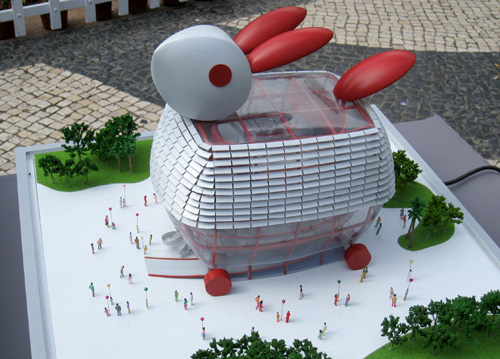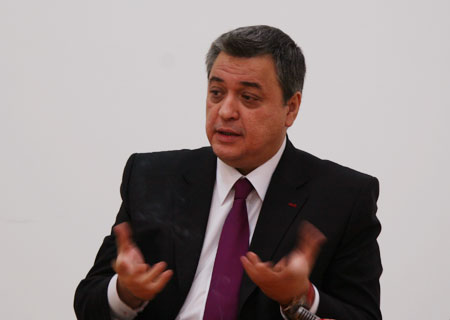|
|


ADVERTISEMENT
Buy Your own advertising
spaces!
.
Download Adobe Acrobat Reader to open [PDF] files.
Recent Visitors
Rabbit Lantern a Symbol of Multicultural Macao
2010. 18 January
In 2008, Macau launched a pavilion design competition to find the best way to showcase the multi-faceted and multi-colored city An artist's rendition of the Macao Pavilion at the World Expo 2010. [Photo: CRIENGLISH.com]
An artist's rendition of the Macao Pavilion at the World Expo 2010. [Photo: CRIENGLISH.com]
by Xu Leiying
(english.cri.cn)
Macao, a charming city where East meets West, has so many different elements to display that using a single building to showcase its cultural multiplicity seems to be a mission impossible.
Finally, the competition's first prize went to Carlos Marreiros, a 52-year-old architect who has a great reputation in Macao.
In late December 2009, Marreiros took an interview from China Radio International, telling stories about both himself and the Macao Pavilion for the World Expo.
As a Macao-born-Portuguese, Marreiros is a perfect example to display a multicultural Macao. He can fluently speak Cantonese, Portuguese and English. He has been to many countries, studying in Lisbon while carrying out an internship in Germany.
Based on his personal experiences and his understanding about the unique charm of Macao, the architect decided to highlight a multicultural society of Macao.
 "When I designed 'the lantern of the rabbit' for the Shanghai 2010 pavilion, my aim was to promote something which was visually attractive, to build up a pavilion that can show the culture of Macao, being both western and Chinese example of this multicultural society."
"When I designed 'the lantern of the rabbit' for the Shanghai 2010 pavilion, my aim was to promote something which was visually attractive, to build up a pavilion that can show the culture of Macao, being both western and Chinese example of this multicultural society."
According to his blueprints, the Macao Pavilion will be constructed in the shape of a rabbit lantern which is a popular toy in China, especially during the traditional Chinese holiday, the Lantern Festival. In Marreiros' eyes, the rabbit lantern is an important symbol of cultural multiplicity.
"It's the little lantern which we have played in our childhood- I did it, my mother did it, my grandfather did it, and my daughters also played with this lantern. And there were not only Chinese playing the lantern in Macao but also other people, foreigners from Europe, the United States or even other countries of Asia. It represents universal culture."
Furthermore, in his opinions, the rabbit is a good choice to represent Macao instead of some other ferocious beasts as it is a small and friendly city and an ideal holiday destination for many people from both home and abroad.
"Because it is clever like Macao (people), it is tiny like Macao, because it is so lovable, the rabbit lantern easily conquered the heart of everybody. Macao cannot be represented by a tiger, for instance, you know, a tiger would be too aggressive to represent Macao."
Since Macao is a city where tradition meets fashion, Marreiros managed to add some modern elements such as advanced technologies as well as interactive features into the traditional pattern of the rabbit lantern.
"The rabbit lantern, on one hand, represents a tradition and then I make it in a contemporary way, a contemporary language with glass, multimedia, steel and with environmental issues, fully spectacular in terms of multimedia outside and inside. So with this, we would like to promote Macao in the best way. "
The Macau pavilion will be covered by a double-layer glass membrane and fluorescent screens. Its transparent outer wall makes it possible to use lightings and colors to give different aesthetical effects in all angles while screens will be used to display Macau's recent economic developments, social and cultural achievements.
In addition, the pavilion is an environment-friendly building. Since it is a temporary construction, the designers made great efforts to avoid waste- the pavilion is powered by solar energy and steel-made. Most construction materials, mainly steel and glass can be recycled after the 184-day Expo.
Marreiros hopes that his work could attract more visitors to the Macao Pavilion during the international gala, at which over 200 pavilions will be built. Given its head and tail, formed by kinetic balloons, that can be hoisted and moved with music, Macanese should have the confidence that their pavilion can easily stand out.
Source: english.cri.cn

